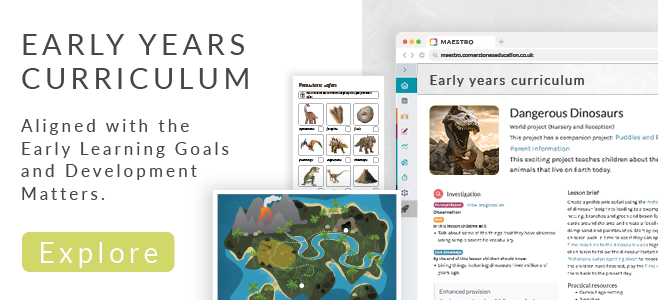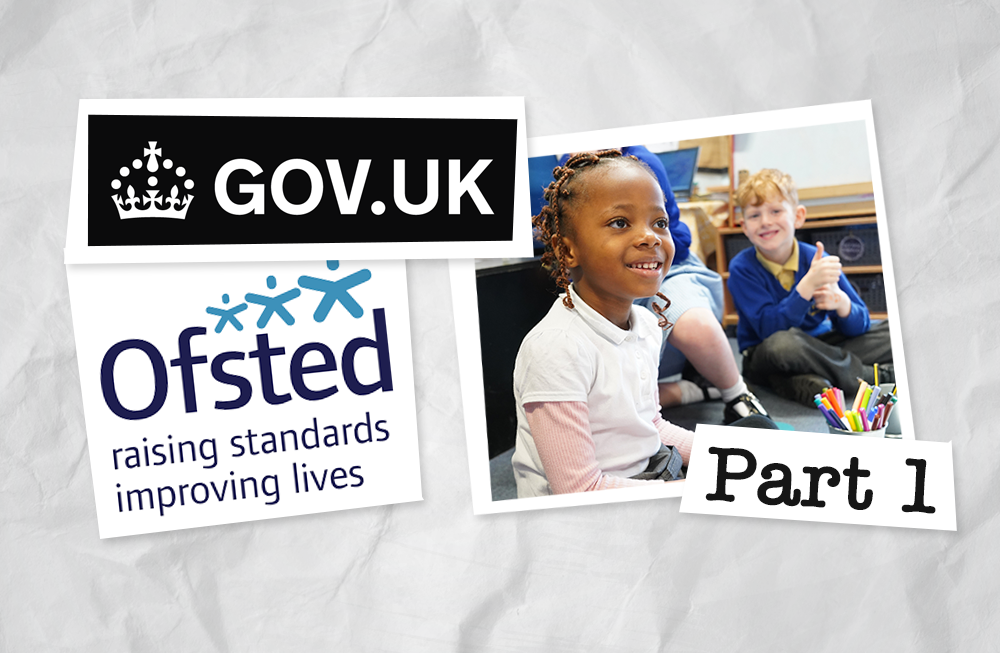Teaching Approaches in the Early Years Part 1
Ofsted’s focus on curriculum and the changes to the EYFS framework has left even some of the most experienced teachers feeling they have lost their confidence. Conversations we have had with teachers show confusion around what ethos and teaching approaches they should use with early years children. Some have concerns about using a topic approach to learning or question whether basing their teaching solely around the children’s interests provides enough structure. The uncertainty is often added to by senior leaders who are unsure of what to look for when observing early years teaching. This blog explores teaching approaches in the early years and how to get the balance right.
What Ofsted says
The School Inspection Handbook includes a paragraph that explores the complexities of teaching in the early years. It describes the many ways that practitioners can support children to learn and clarifies that teaching in the EYFS ‘should not be taken to imply a ‘top down’ or formal way of working.’ It is important to share this expectation with senior leaders so that they understand what to look for when observing teaching. It is also worthwhile exploring with your team the many ways you work with children to support their learning and provide challenge, both in teacher-led activities and during child-initiated play.
Prioritising play
It is widely recognised that play supports children’s development. It taps into their natural curiosity and provides opportunities to explore interests and develop social skills. Whatever your teaching ethos, it is essential to remember that to develop children’s understanding and support them to develop specific skills, this play needs to be expertly supported by adults. Joining children in their play and responding gives valuable opportunities to introduce vocabulary in context, add a narrative to play and develop learning. It also provides the chance to get to know the children well and understand their interests, strengths and areas of development.
Play with purpose
It is essential not to turn play into an assessment point. Rather than bombarding children with questions, it is crucial to have natural conversations. This allows you to be a partner in the play and add value to children’s experiences rather than hijacking their ideas with your agenda. In her book Interacting or Interfering? Improving interactions in the early years, Julie Fisher explores the concept of who is leading the learning and how the interactions we have with children can either add value or shut learning down. When learning is adult-led, the teacher has clear expectations and knows in advance the skills, knowledge and vocabulary the children need to understand. A natural part of the teaching process is to respond to the children’s needs to plan the next learning opportunities. When the learning is child-initiated, the balance shifts. Children take the lead and direction for the learning. Adults still respond to their thoughts and ideas, but rather than having a clear plan, this is spontaneous. In these instances, it is essential to take the time to listen carefully, share the children’s experiences, ponder what might happen, and work together to solve problems. Working in partnership with children as they play, whether this is adult-led or child-initiated, provides valued insight into what they learn and how they learn.
What the EYFS framework says
The reformed Statutory Framework for the EYFS is aligned with the School Inspection Framework and recognises that play is essential for children’s development. It does not advocate or ‘prescribe a particular teaching approach’ but explains that to prepare children for learning in year 1, ‘there should be a greater focus on teaching the essential skills and knowledge in the specific areas of learning’ when children are in the reception year.
Teaching with intent
In her book, The Intentional Teacher: Choosing the Best Strategies for Young Children’s Learning, Ann Epstein explores practical strategies for teaching in the EYFS. She concludes that the most effective teachers are intentional teachers. They do not take a ‘laissez-faire’ approach in which children have control over all their learning. This would mean that learning could be haphazard and lack purpose and direction. However, neither do they see children as ’empty vessels’ that need filling with knowledge. To teach with intent, it is essential to have a clear plan of what we want children to learn, why we want them to understand it and how to teach it.
Getting the balance right
‘If all children are to succeed, teachers need to create an effective balance between learning that is child-initiated and learning that is led by adults.’
Hyson 2000
This balance is crucial so that children’s play and ideas have equal value to adult-led learning opportunities. Planned adult-led activities provide the opportunity to introduce specific skills, knowledge and vocabulary progressively and in sequence. Adult initiated activities enhance the continuous provision and provide children with a springboard for their learning. However, it is also essential to have a flexible teaching approach and respond to the direction children take the learning. Getting the balance right is very tricky, but by considering the different ways children learn, and the various strategies to support learning, it is possible to find a way that works for you and the children.
In the next blog, we will explore the fundamental EYFS principles; the unique child, positive relationships and enabling environments and how best to support learning for children in the early years.
Top tips
Make a list of the ways your EYFS team will work with children to develop their learning to ensure all staff are aware of expectations and senior leaders understand what to look for when observing teaching and learning.
Ideas could include; practitioners will join children in their play to:
- Model skills
- Provide support with communication
- Add a narrative to the play
- Support with interactions
- Model language
- Model behaviour expectations
- Introduce and use new vocabulary
- Demonstrate and explain ideas
- Encourage children to explore and explain their ideas
- Undertake informal assessment and plan the next steps for learning
Part 2
In Part 2 of this blog, we consider how positive relationships and enabling environments influence learning for all children. Read Part 2 now.



